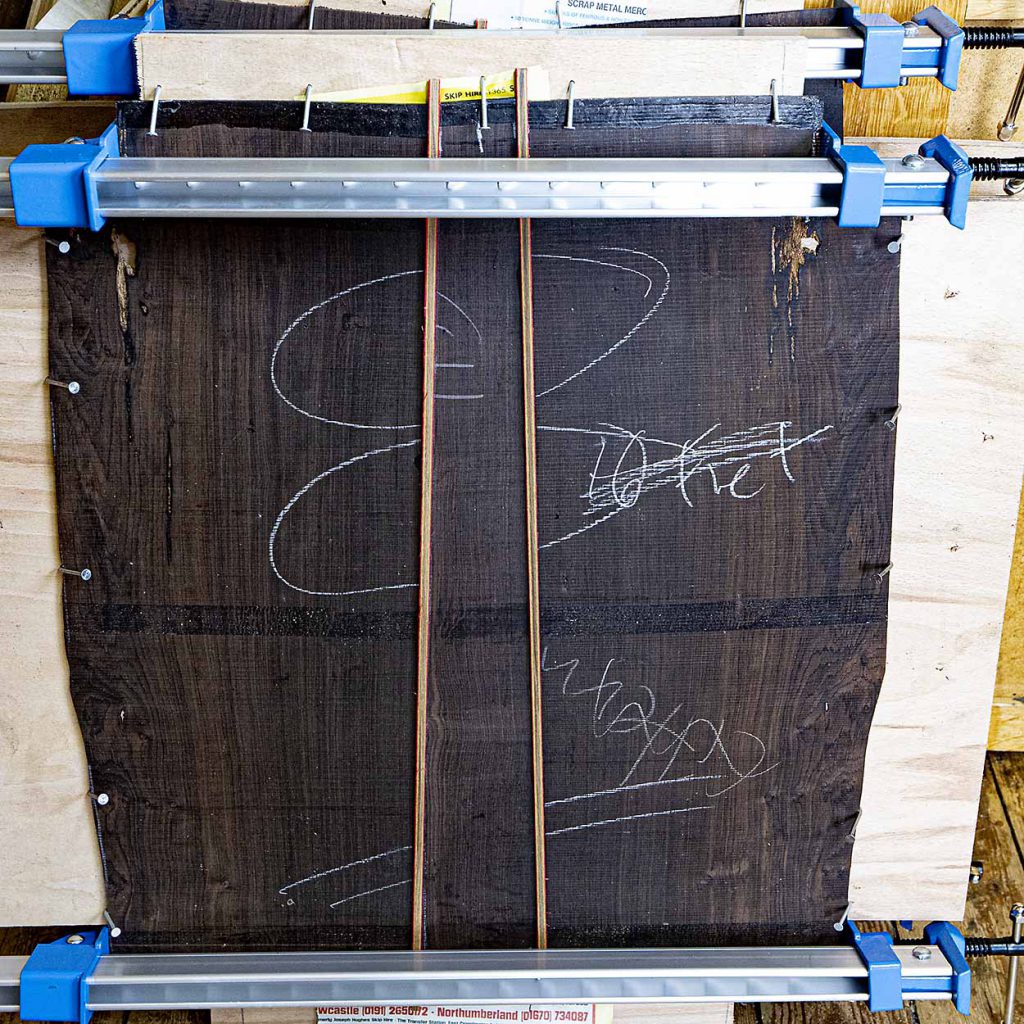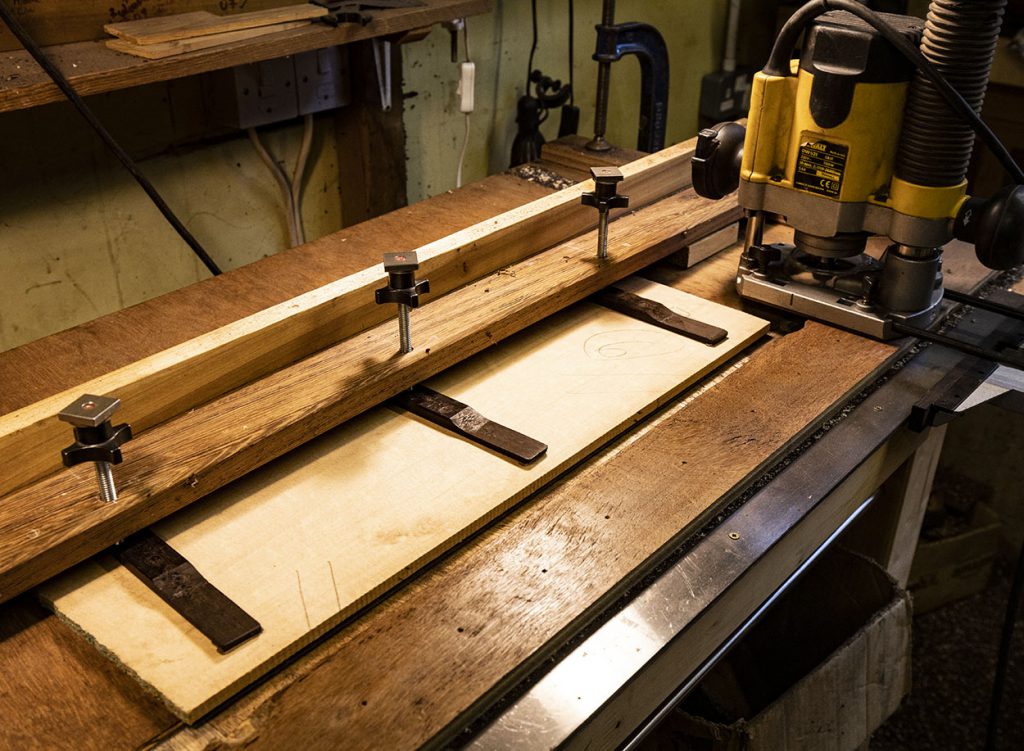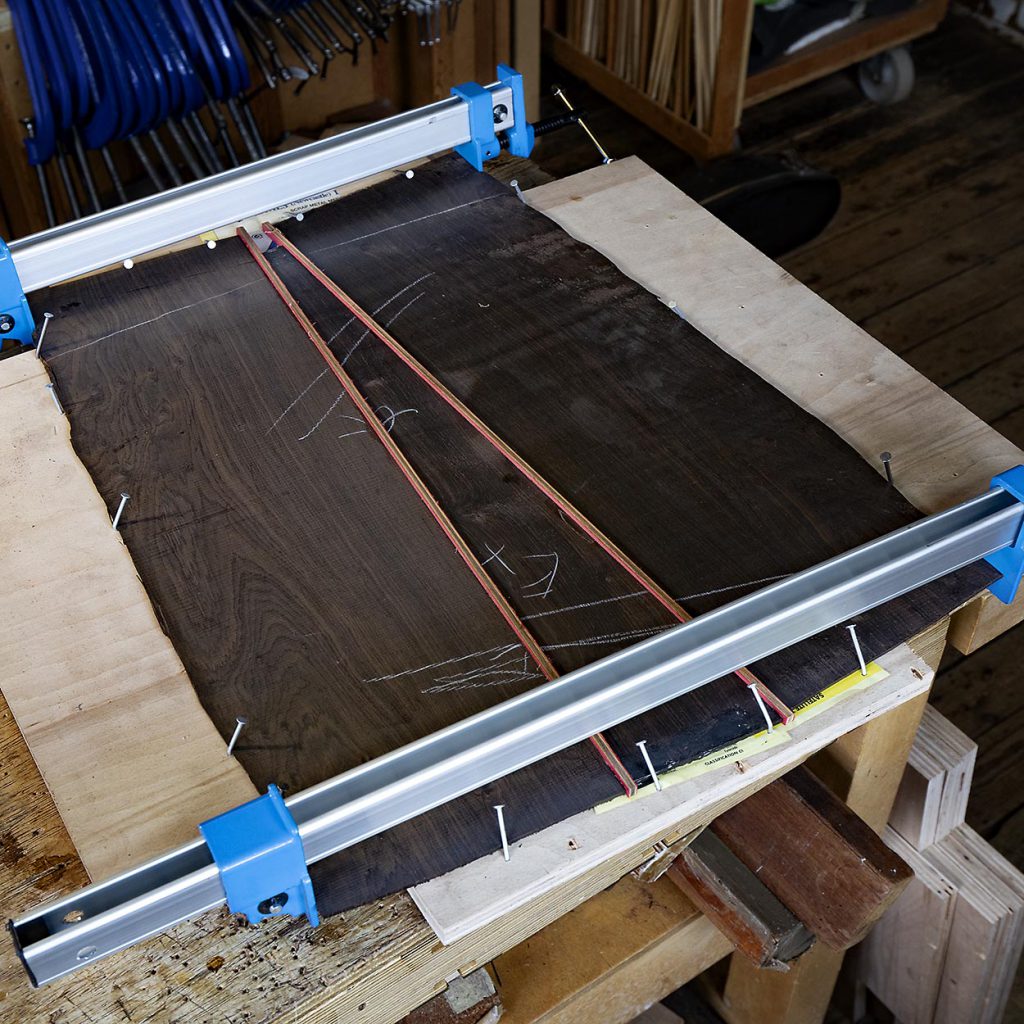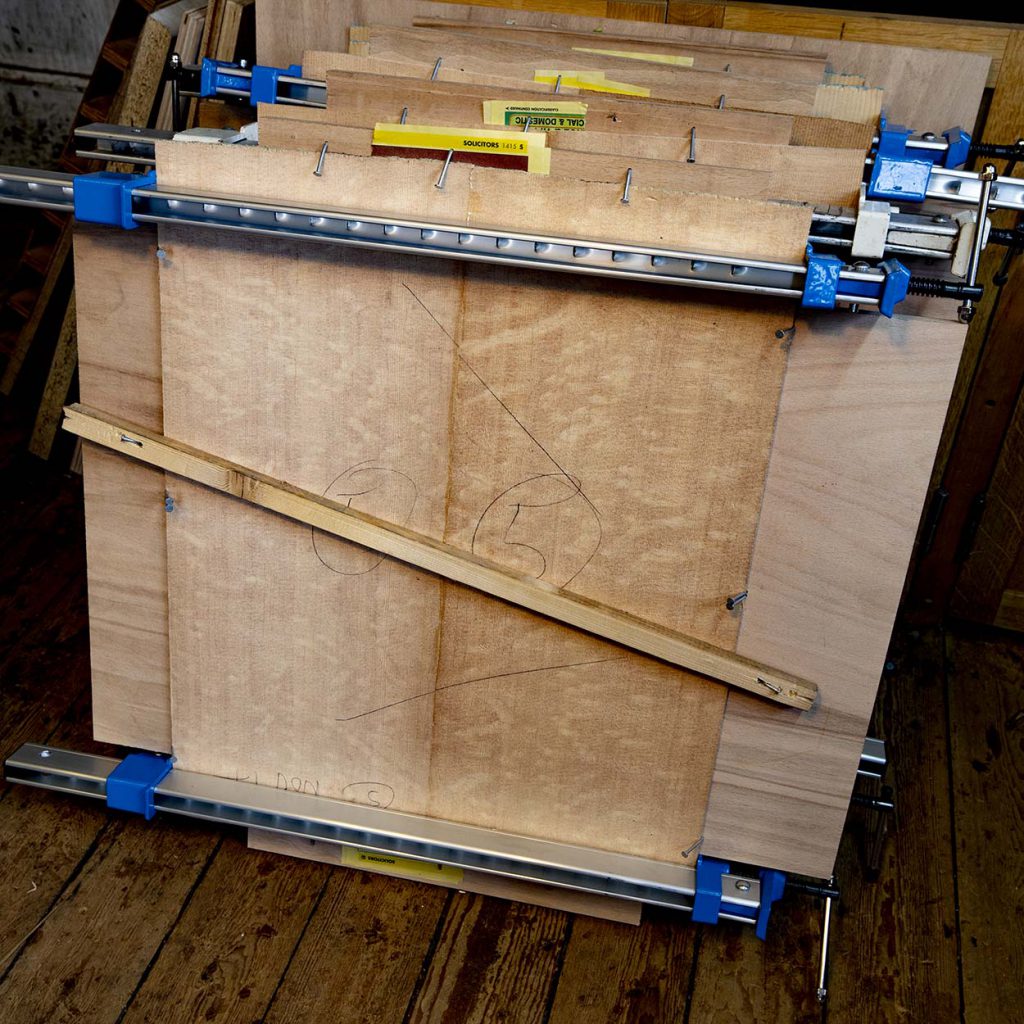Joining backs and soundboards
.
This is the very start of building an instrument. The backs come to me usually in two or three pieces, (though I have made up to six piece backs). Two piece backs are straightforward, but for the three piece backs I have to decide on the best proportion of centre to outside strips and this can depend on what I have to work with.
Here I’m joining five African Blackwood backs, only one of which was wide enough for a two piece, the rest all being three piece. It can take a while to decide which is the best arrangement to make the best possible use of the wood in hand, and no two backs end up identical.
But it’s lovely wood to hold and to work with, and makes wonderful sounding guitars. Having two or three piece backs makes no difference to the sound, this is entirely dependent on the quality of the wood.
I’m also joining five figured Sitka soundboards, all of which are two piece; it’s unusual for soundboards to be more than two piece.
.
Here I’m dressing the joint edges of a soundboard with a router on a specially built jig. Both halves are in the jig, so both are dressed at the same time, ensuring a close joint.
The clamps used below are aluminium. Not designed for heavy use, they are capable of more than enough pressure for this job and their light weight is easy on the joined boards when moving them around.




